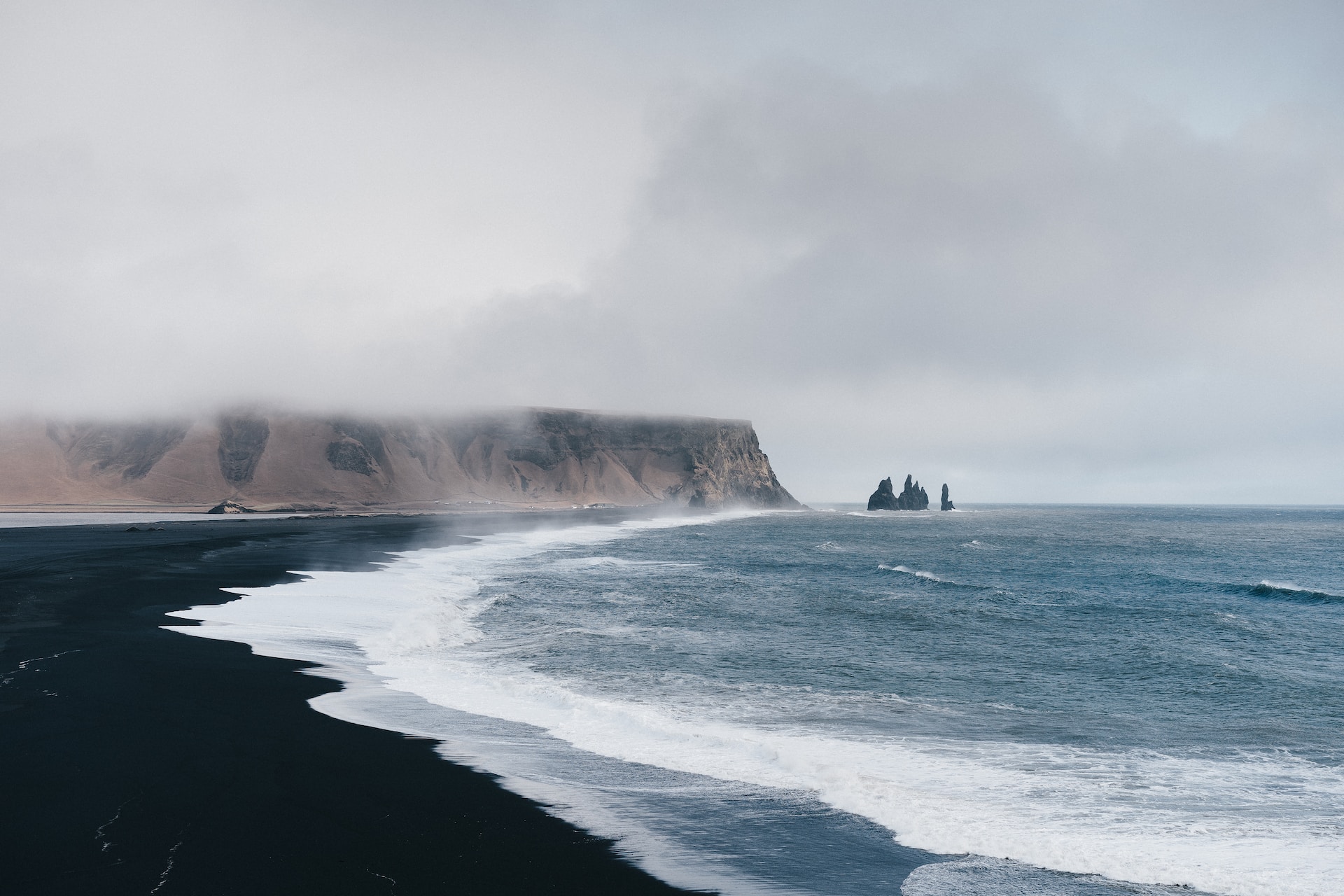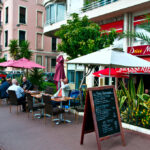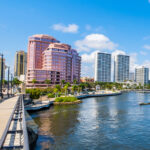Nestled in the North Atlantic Ocean, Iceland stands as a breathtaking juxtaposition of roaring volcanoes and sweeping glaciers, fiery eruptions and icy terrains. It’s a land where nature’s extremes coexist in harmonious beauty, making it one of the world’s most captivating travel destinations.
Geography and Geology: A Turbulent Beauty
Iceland is a Nordic island nation located between Europe and North America. Covering an area of 103,000 square kilometers, it’s primarily situated on the Mid-Atlantic Ridge where the Eurasian and North American tectonic plates meet. This unique geographical position makes Iceland one of the most geologically active regions in the world, marked by frequent earthquakes, volcanic eruptions, and geothermal activity.
Volcanoes play a defining role in Iceland’s landscape. With over 130 volcanic mountains, of which around 30 volcanic systems are still active, the island experiences an eruption roughly every 4-5 years. Eyjafjallajökull’s 2010 eruption is a testament to how these geological events can capture global attention.
Natural Wonders: Where Myth Meets Reality
- The Northern Lights (Aurora Borealis): Few natural phenomena are as enchanting as the Northern Lights. Visible during winter, these celestial dances of green, pink, and violet hues against the stark black sky are nothing short of magical.
- The Golden Circle: This popular tourist route offers a glimpse into Iceland’s diverse landscape. It includes the Geysir Geothermal Area with its erupting geysers, the powerful Gullfoss waterfall, and Þingvellir National Park – a UNESCO World Heritage site where one can literally walk between continents.
- Blue Lagoon: A geothermal spa located in a lava field, the Blue Lagoon’s milky blue waters are rich in minerals and known for their healing properties.
- Ice Caves and Glaciers: Vatnajökull, Europe’s largest glacier, is home to some of the most mesmerizing ice caves. Their ethereal blue interiors offer a surreal experience.
Culture and History: Echoes of the Sagas
Icelanders cherish their rich heritage that traces back to ancient Norse culture. The Icelandic sagas, epic tales of heroes, gods, and battles, were penned in the 12th and 13th centuries but speak of events from the 9th century onward. Today, these sagas offer insights into the country’s medieval history.
The Old Norse influence is also evident in modern Iceland. The language spoken today remains remarkably similar to that of ancient texts, and traditional festivals like Þorrablót and the Summer Solstice are still celebrated with enthusiasm.
Modern Reykjavik: The Northernmost Capital
Reykjavik, the capital of Iceland, stands as a blend of the traditional and the modern. While it’s the political and economic center, Reykjavik is also teeming with art, music, and literature. Iconic structures like the Hallgrímskirkja church and the Harpa Concert Hall showcase the city’s architectural marvels. The bustling nightlife, with its pubs and music festivals, reveals a city that’s as lively at night as it is during the day.
Environmental Consciousness
Icelanders have a profound respect for nature. Harnessing the country’s geothermal energy, almost 90% of Icelandic homes are naturally heated. Iceland is also on a path to becoming carbon neutral, with considerable investment in sustainable technologies.
Challenges: Nature’s Wrath and Tourism
While nature blesses Iceland with its beauty, it also poses significant challenges. Eruptions can disrupt daily life, and earthquakes are a constant reminder of the island’s volatile geology. Furthermore, the booming tourism industry, which plays a vital role in the economy, raises concerns about environmental sustainability.
Iceland, often termed the ‘Land of Fire and Ice’, is an embodiment of contrasts. It’s a place where molten lava meets glacial waters, where ancient sagas resonate in modern times, and where the warm hospitality of the locals contrasts the often cold and raw climate. Offering an unparalleled blend of nature, history, and culture, Iceland invites travelers and researchers alike to immerse in its wonders and mysteries. With every geysir, waterfall, and lava field, it tells a tale as old as time, waiting for the world to listen.
When it comes to Icelandic food, it’s a mixture of historic necessity and present-day innovation. Given its remote location and challenging climate, traditional Icelandic cuisine centered around preserving methods like smoking, pickling, and fermenting.
- Fermented Shark (Hákarl): Arguably the most infamous of Icelandic dishes, Hákarl is fermented Greenland shark. Due to the shark’s high levels of urea and trimethylamine oxide, it needs fermentation to become edible. The taste, which many describe as an acquired one, is a testament to Icelanders’ resourcefulness.
- Icelandic Lamb: Thanks to the island’s pristine environment, Icelandic lamb has a distinctive taste. Whether it’s grilled, roasted, or used in stews, the lamb is a staple and much-loved meat.
- Skyr: Often compared to yogurt, Skyr is a dairy product unique to Iceland. It’s thick, creamy, and packed with protein, usually enjoyed with berries or a sprinkle of sugar.
- Fresh Seafood: Being an island nation, Iceland prides itself on its fresh fish and seafood. Arctic char, cod, and langoustine are just a few of the aquatic delights often found on Icelandic plates.
Music and Literature: Iceland’s Creative Soul
Iceland might be small in population, but it has a vast cultural footprint, especially in the realms of music and literature.
Music: Internationally known bands and artists like Björk, Sigur Rós, and Of Monsters and Men hail from this tiny island. With its vibrant music festivals, such as Iceland Airwaves, the country has become a hotspot for music enthusiasts around the world.
Literature: The literary tradition of Iceland dates back to the sagas. Today, the country has one of the highest numbers of book publications per capita. Reykjavik was named a UNESCO City of Literature in 2011, solidifying its reputation as a hub for writers and readers.
Wildlife and Flora: Nature’s Bounty
While Iceland may not boast a diverse range of wildlife, what it has is truly unique.
- Icelandic Horses: Brought by the Vikings in the 9th and 10th centuries, the Icelandic horse is a pure breed known for its five gaits. They are a common sight in the Icelandic countryside.
- Puffins: These charismatic birds with bright beaks are found in large colonies along the Icelandic coast during the breeding season.
- Arctic Fox: The only indigenous mammal of Iceland, the Arctic fox, is often spotted in the Westfjords region.
Iceland’s flora, though limited due to its climate and volcanic activity, has its charms. From birch forests to fields of lupine, the vegetation paints the landscape in vibrant colors during the short summer.
Festivals: Celebrating the Icelandic Spirit
Icelanders love to celebrate, and their festivals range from traditional to modern.
- National Day (Þjóðhátíðardagurinn): Held on June 17th, it commemorates the founding of the Republic of Iceland in 1944. The day is marked by parades, dances, and music.
- Secret Solstice: This is a unique summer music festival in Reykjavik that takes advantage of the 24-hour sunlight during the solstice.
- Dark Music Days (Myrkir Músíkdagar): This winter festival is a celebration of contemporary music, offering a contrast to the long winter nights.
Iceland, with its enigmatic charm, offers more than just landscapes. It presents a story of endurance, creativity, and harmonious coexistence with nature. Its profound cultural legacy, combined with its modern dynamism, positions Iceland not just as a travel destination but as a testament to human resilience and imagination. Whether you’re trekking through its vast terrains, diving between tectonic plates, or simply soaking in its rich history, Iceland promises an experience that lingers long after the journey ends.







